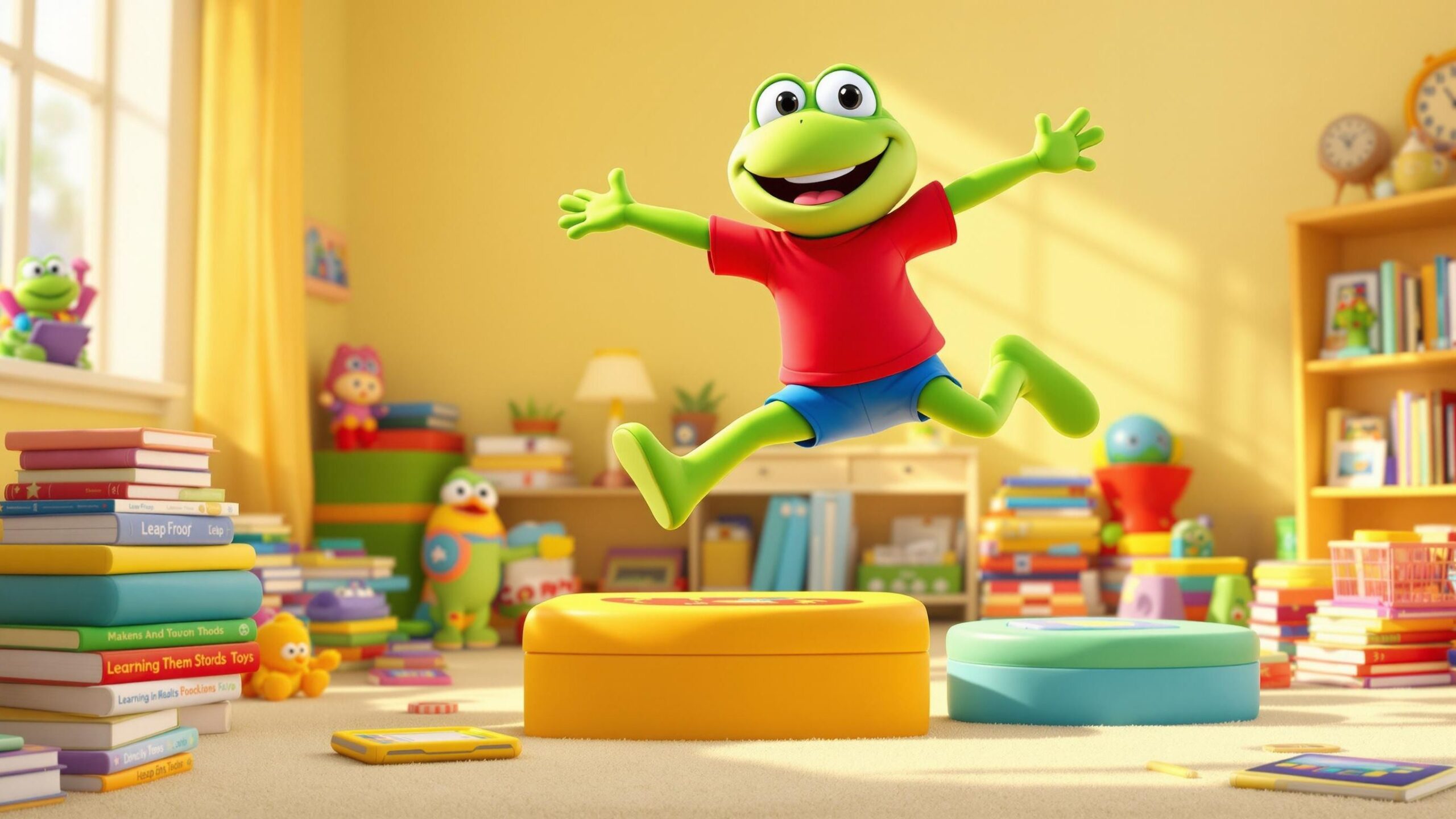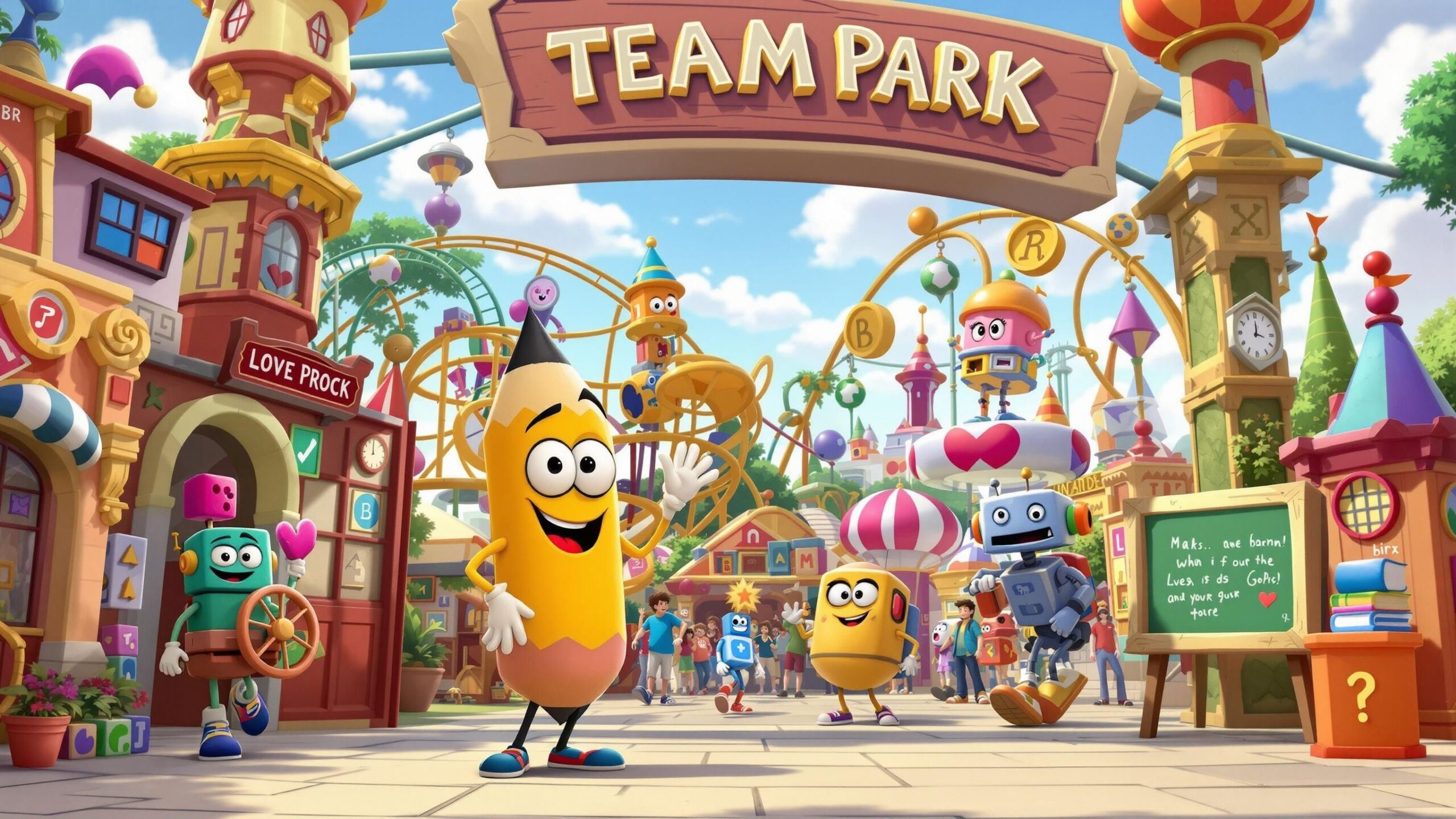When parents think of educational toys that actually get results, one name hops to the top of the list: LeapFrog. And no character better represents that legacy than Leap—the wide-eyed, green-skinned frog who’s been guiding kids through their ABCs, 123s, and tech-based learning journeys for more than two decades. He’s cheerful. He’s helpful. He’s a little too good at spelling words on command. But there’s a lot more to Leap than just phonics and touchscreen prompts. Like any good mascot, he’s been through reboots, rebrands, and behind-the-scenes updates that most people have no idea about. From his original character design to surprising voice actor swaps and hidden references, Leap has evolved into one of the most quietly influential figures in kids’ edutainment. Here are the top 10 things you probably didn’t know about LeapFrog’s beloved amphibian.
#10
Leap’s full name is actually Leap E. Frog—a pun that somehow flew under the radar for years. While most kids simply knew him as “Leap,” the character has a full, pun-packed name used occasionally in product packaging and marketing material. The “E” doesn’t officially stand for anything, but fans have joked it means “Education.” It’s the kind of subtle joke parents would chuckle at while buying LeapPads, while kids just saw a friendly green frog ready to teach them vowels.
#9
He wasn’t the original star. While Leap is the most recognizable LeapFrog character now, the company originally launched with voice-based phonics systems in the late ’90s that didn’t include him. Leap made his official debut in 1999 with the LeapPad, but it wasn’t until the release of Letter Factory that he became the face of the brand. Before Leap, most LeapFrog products featured more abstract or tech-based imagery rather than a central mascot. His introduction helped give the brand an identity—and a lovable green face to trust.
#8
Leap has had multiple voice actors over the years—most notably voiced by actor Sandy Fox in the early animated DVDs like Letter Factory and Talking Words Factory. Fox, known for voicing anime characters and cartoon icons like Betty Boop, brought a high-pitched, energetic charm to Leap that defined his early persona. Later versions of Leap in newer animated series and apps have taken on deeper, more grounded voices as he “aged up” slightly to appeal to older kids. This shift shows how the brand subtly adjusted its tone to grow with its audience.
#7
His original design was more frog-like. Early concept sketches of Leap show a much more realistic amphibian—with longer limbs, webbed hands, and more muted coloring. Over time, his design became more rounded, stylized, and expressive to match kids’ animation trends. His current form—big eyes, permanent smile, and a bright green palette—was finalized around the time of the LeapFrog DVD boom in the early 2000s. That version stuck and became the template across toys, books, apps, and live appearances.
#6
Leap’s siblings are also canon. Leap isn’t the only frog in the family—his younger sister Lily and baby brother Tad have appeared in almost every LeapFrog DVD, with roles often focused on early learners (Tad for preschool, Lily for kindergartners). The trio reflects real-life learning stages, with Leap usually being the “teacher” figure who guides his siblings through songs and games. This built-in family structure subtly reinforces educational progression—and gave kids characters to grow with over time.
#5
Leap was almost retired during LeapFrog’s rebranding in the mid-2010s. As the company shifted toward app-based platforms and partnerships with Netflix and other media outlets, there were talks of replacing or heavily updating the core mascots. However, user testing revealed that Leap still had high recognition and emotional value for families. So rather than remove him, they doubled down—keeping his presence in learning tablets and giving him sleeker redesigns for new digital platforms like the LeapStart.
#4
There’s a LeapFrog theme park ride—sort of. While not official, a LeapFrog-themed play area featuring Leap and his siblings was once included in a children’s section at Dollywood during a toy partnership era in the early 2000s. It included large character cutouts, foam lily pads, and interactive musical elements based on Letter Factory. Though the installation was short-lived, photos of the attraction occasionally resurface in nostalgic parenting groups online.
#3
Leap makes hidden cameos in LeapFrog’s eBooks and video games. In several of the brand’s digital storybooks and early Leapster games, Leap appears as an Easter egg—hiding behind trees, peeking through windows, or popping out during loading screens. These small nods are similar to classic game mascot cameos, turning Leap into a kind of educational version of “Where’s Waldo.” It helped boost engagement with kids who were already used to seeing him on screen.
#2
Leap helped teach millions of kids to read through Letter Factory, which became one of the highest-rated educational DVDs of its time. The catchy songs and simple breakdowns of letter sounds were developed in consultation with child development experts and educators. Leap’s performance in that series wasn’t just cute—it was pedagogically sound. Parents around the world still praise Letter Factory as the turning point in their child’s reading journey, giving Leap real educational legacy status.
#1
Leap has outlasted most edutainment mascots in history. While other learning brands like Hooked on Phonics or VTech shifted mascots or leaned away from character branding altogether, Leap has stayed consistent for over two decades. His longevity is a testament to his appeal across platforms—DVDs, learning toys, apps, games, and streaming. He may not be as flashy as modern YouTube stars, but Leap has remained a quiet constant in early learning. And for many millennial parents, seeing Leap again feels like a warm, nostalgic high-five from their own childhood.
Leap might not shout the loudest, but his influence in educational entertainment is undeniable. For over 20 years, he’s been hopping into homes with patience, encouragement, and a steady stream of catchy songs about vowels. His evolution from a simple learning buddy to a cross-platform educational icon shows how powerful a good mascot can be—especially one who’s always ready to help kids take that next learning leap. Whether you grew up with him or just introduced your own kids to his world, Leap is a reminder that education and fun don’t have to be separate.



